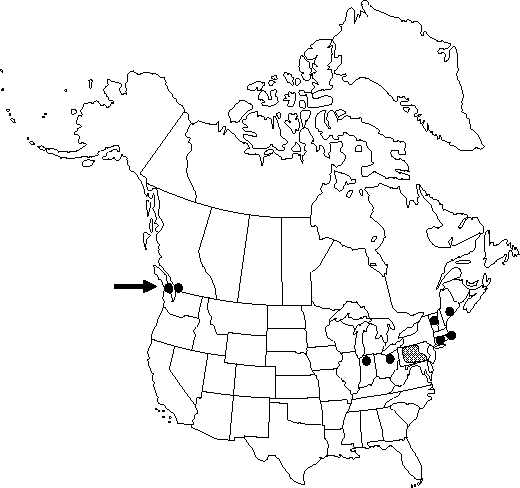Betula pubescens subsp. pubescens
Trees, narrow, to 20 m; trunk usually 1, branches ascending or spreading. Twigs usually without conspicuous resinous glands. Leaf-blade broadly ovate to rhomic-ovate, 3–4 (–6) × 2–4 (–6) cm, base rounded, truncate, or cuneate, margins finely to coarsely toothed or dentate, apex acute; surfaces abaxially moderately pubescent to velutinous, especially along major veins and in vein-axils. Fruiting catkins 2–3 × 0.8–1.2 cm; scales puberulent and ciliate, lobes diverging at middle, central lobes ovate to delatate, apex acute to obtuse, lateral lobes divergent, about equal in length, several times broader. Samaras with wings somewhat broader than body, broadest near summit, extended beyond body apically. 2n = 56.
Phenology: Flowering late spring.
Habitat: Rocky slopes, scrubs, heaths, and open woods where native, elsewhere in abandoned plantings, moist open roadsides, swales, swampy thickets
Elevation: 0–200 m
Distribution

Introduced; B.C., Conn., Ind., Maine, Mass., N.H., Ohio, Pa., Vt., native to Europe
Discussion
Betula pubescens subsp. pubescens is commonly cultivated in northeastern North America, where it has sometimes escaped and persisted, or become adventive but not widely naturalized. It is distinguished from other light-barked species in the East by its relatively small leaves, pubescent twigs, and brownish, mostly unpeeling bark.
Selected References
None.
Lower Taxa
"equal" is not a number."broader" is not a number."broadest" is not a number. "somewhat broader" is not a number.